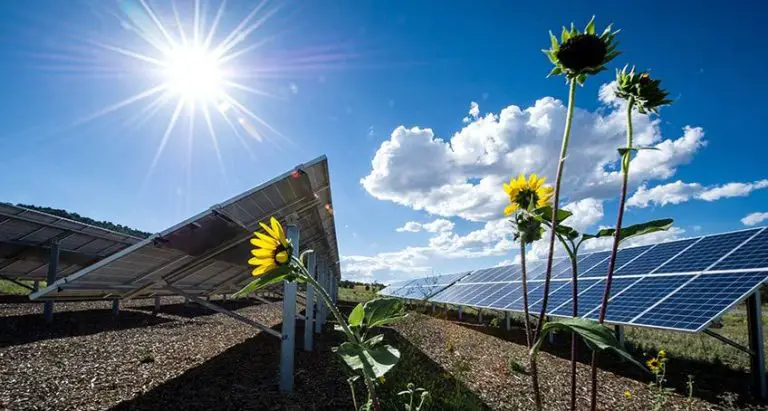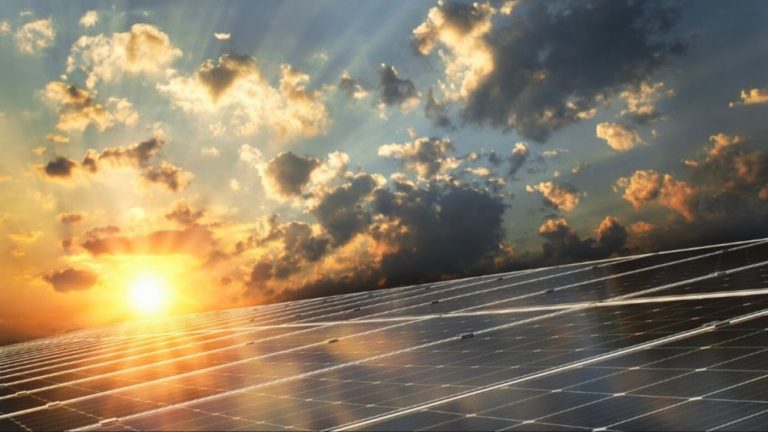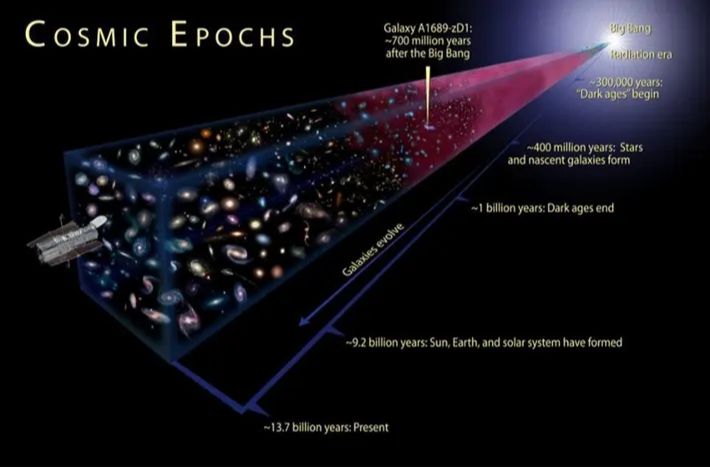What Device Directly Converts Light Into Electricity?
Photovoltaic cells, often referred to as solar cells, are devices that directly convert light into electricity using the photovoltaic effect. They are a key technology in the generation of renewable energy from sunlight. The ability to convert sunlight directly into useable electricity is an important achievement that provides a clean, sustainable source of energy that reduces dependence on fossil fuels.
The photovoltaic effect was first observed in 1839 by French physicist Alexandre-Edmond Becquerel. However, it was not until 1954 that researchers at Bell Labs in the United States produced a silicon solar cell capable of converting enough sunlight to run everyday electrical equipment. The space industry was an early adopter of the technology to provide power aboard spacecraft. Through continued research and development, photovoltaic technology advanced rapidly in efficiency and cost-effectiveness, making it a competitive energy source.
Today, solar cells are commonly used in countless consumer devices, residential solar installations, commercial buildings, and large-scale solar farms. As solar power expands as a mainstream energy resource, photovoltaic cells remain at the center of harnessing the abundant power of the sun.
How Photovoltaic Cells Work
Photovoltaic cells, also known as solar cells, work through the photoelectric effect. When photons from sunlight hit the solar cell, they transfer their energy to the electrons in the atoms of the semiconductor material the cell is made of. This energy knocks the electrons loose, allowing them to flow freely.
The solar cell has an electric field that acts to force electrons freed by light absorption to flow in a certain direction. This flow of electrons is an electric current that can be captured and utilized.
The basic structure of a photovoltaic cell consists of two layers of semiconductor material. On the top is a layer with extra electrons, called the n-type layer. On the bottom is a layer with fewer electrons, called the p-type layer. The interface between these two layers is called the p-n junction.
When sunlight enters the cell, photons strike atoms in the semiconductor and knock electrons loose. The electric field of the p-n junction provides direction for the flow of electrons from the p-type side to the n-type side. Metal conductive plates on the sides of the cell collect the electrons as direct current electricity.
This process of converting light (photons) to electricity (voltage and current) through the photoelectric effect is what gives photovoltaic cells their name and their capability to turn sunlight directly into usable electrical energy.
Types of Photovoltaic Cells
There are several different types of photovoltaic cells, which are made from different semiconductor materials. The most common type is crystalline silicon, but other types include:
-
Crystalline Silicon (c-Si) – Comes in monocrystalline and polycrystalline forms. Monocrystalline is more efficient but more expensive. Polycrystalline is cheaper but less efficient.
-
Cadmium Telluride (CdTe) – Thin-film PV cells made from cadmium and tellurium. Less efficient than silicon but cheaper to manufacture.
-
Copper Indium Gallium Selenide (CIGS) – Thin-film PV cells made from copper, indium, gallium, and selenium. Comparable efficiency to CdTe.
-
Organic PV Cells – Made from thin films of organic semiconductors like polymers and small-molecule compounds. Lower efficiency but very lightweight and flexible.
Each type has its own advantages and disadvantages in terms of efficiency, manufacturing costs, flexibility, and environmental impact. Continued research aims to improve the efficiency and lower the costs of PV cells.
Manufacturing Photovoltaic Cells
The manufacturing process for photovoltaic cells involves several steps to produce the silicon wafers that make up the cells. Here are some of the main steps:
Purifying Silicon
Solar cells require very pure silicon, so the manufacturing process starts by purifying metallurgical grade silicon to higher levels of purity. This involves processes like the Siemens process where silicon is reacted with HCl gas to form trichlorosilane, which is purified by distillation.
Growing Silicon Crystals
The next step is to grow high-quality single crystal silicon ingots. One method is the Czochralski process where a seed crystal is dipped into molten polysilicon and slowly extracted while rotating to grow a cylindrical ingot up to 2 meters long.
Slicing Ingots into Wafers
The cylindrical ingots are then sliced into thin wafers about 200 microns thick using diamond saws or wire saws. This wafer sawing process leads to some loss of material, so manufacturers aim to cut wafers as thin as possible.
Processing and Finishing
The silicon wafers then undergo chemical etching and cleaning steps to smooth the surface. An anti-reflective coating is added to increase light absorption. Contacts are printed on the surface using metallization pastes containing silver, aluminum or copper.
Assembling Cells and Modules
Individual cells are assembled into interconnected modules and panels, with solar glass on the top surface and protective backing on the rear. Frames, junction boxes and electrical connections are added to produce the finished solar modules.
Efficiency of Photovoltaic Cells
The efficiency of a photovoltaic cell refers to what percentage of the solar energy striking the cell is converted into usable electricity. There are several factors that affect the efficiency of PV cells:
PV Cell Material: Some materials, like monocrystalline silicon, have higher efficiency rates than others. Materials like amorphous silicon have lower efficiency rates, but are cheaper to produce.
Temperature: Higher temperatures decrease a PV cell’s efficiency. On hot days, a solar panel’s output can drop substantially if it isn’t properly cooled.
Quality of Light: The intensity and wavelength of incoming sunlight impacts efficiency. Cloudy days and early mornings/evenings provide less intense sunlight. PV cells operate optimally on clear days when sunlight hits the panels perpendicularly.
Age of System: Dust buildup, weathering, and degradation over time reduces efficiency. Proper maintenance is required to maximize lifespan.
The theoretical limit of efficiency for traditional crystalline silicon solar cells is around 29%. The most efficient mass-produced PV modules achieve 22-24% efficiency rates under optimal conditions. Ongoing research is focused on using new materials like perovskite to push past silicon’s efficiency limits.
Applications of Photovoltaic Cells
The most common application of photovoltaic cells is in solar panels. Solar panels can vary greatly in size and power output, from small rooftop systems on homes and businesses to large-scale solar farms covering acres of land. The modular nature of solar panels allows them to be adapted for a wide variety of uses.
Rooftop solar panels are mounted on the roofs of buildings, either on racks that are mechanically attached or integrated directly into the roof’s structure. Rooftop systems generate electricity that is used to offset the building’s electrical needs, reducing utility bills. Any excess electricity produced is fed back into the grid. Solar panels are also mounted on ground-based racking systems, carports, over parking lots or fields to create solar farms or solar parks.
In addition to buildings and dedicated solar farms, photovoltaic cells are used to power a diverse array of devices. Smaller solar cells charge and power watches, calculators, radionadio signals, and light beacons and buoys. Slightly larger panels provide electricity for water pumps, electric fences, road signs, remote sensing and telecommunications equipment. Off-grid industrial, commercial and residential systems provide energy to locations without access to an electrical grid. Photovoltaic cells also power satellites, electric cars and more.
Cost of Photovoltaic Cells
The cost of photovoltaic cells, also known as solar panels, has declined substantially in the past few decades, making solar energy more affordable and widespread. In the 1970s, solar panels could cost over $70 per watt. Today, prices have dropped below $0.40 per watt on average.
There are a few key factors driving down the manufacturing costs of solar panels:
- Economies of scale – As production volumes have increased, manufacturers have been able to achieve lower costs per unit.
- Technology improvements – New manufacturing techniques and solar cell technologies have increased efficiency and yields.
- Silicon purification – Purifying silicon for use in solar cells now costs 90% less than it did in the 1970s.
- Automation – Increased use of robots, conveyor belts, and other automated equipment has boosted productivity.
In addition to the panel costs, there are installation and permitting costs to consider. Installation costs can range from $2 to $5 per watt, depending on system size and location complexity. Permitting and inspection fees can add a few hundred dollars. Overall, with incentives and falling solar panel prices, payback periods for rooftop solar systems can be less than 10 years in many regions.
Industry experts expect solar panel costs to continue declining in the years ahead, making solar power even more cost competitive with fossil fuels. Increased manufacturing scale, new technologies like thin-film PV, and streamlined processes will likely contribute to further cost reductions.
Environmental Impact
The environmental impact of photovoltaic cells, also known as solar panels, is complex. On one hand, they provide clean, renewable energy without emitting greenhouse gases. However, there are some concerns around solar panels’ carbon footprint, use of toxic materials, and recycling/disposal.
In terms of carbon footprint, the emissions from manufacturing, transporting, and installing solar panels need to be taken into account. Most estimates find that a solar panel can become carbon neutral within 1 to 4 years of operation, after which it provides net carbon savings over its lifespan. So while they aren’t emission-free to produce, solar panels repay their carbon debt quickly.
Some potentially toxic materials like lead and cadmium are used in manufacturing solar panels. This raises concerns around contamination during production and disposal. However, modern solar panels typically have very low toxic material concentrations. Proper recycling and disposal procedures also help minimize any potential risks and environmental contamination.
Recycling and disposal of solar panels at end-of-life needs to be handled properly. Solar panels contain valuable materials like silicon, silver and copper that can be recovered through recycling. Some solar manufacturers and installers now offer panel take-back and recycling programs. Disposing of solar panels in landfills is discouraged to avoid toxins leaching into the soil. Many areas now have regulations requiring the recycling of old solar panels.
Overall, while solar panels do have some environmental impacts related to production, toxics and waste, they provide a tremendous net benefit to the environment over their lifespan by generating clean renewable energy. Responsible manufacturing, recycling, and proper disposal can help minimize their ecological footprint.
Future Outlook
The future looks bright for photovoltaic cell technology. With continued research and development, photovoltaic cells are only going to become more efficient and cost-effective.
One major area of focus is improving the efficiency of photovoltaic cells. Scientists are exploring new materials and manufacturing techniques to increase the percentage of sunlight that gets converted into electricity. Some advanced solar cell designs can already achieve over 40% efficiency in lab tests.
Researchers are also working with perovskites, organic compounds that can be used to create thin, flexible solar cells. Perovskite solar cells are inexpensive to manufacture and can reach efficiencies comparable to traditional silicon solar cells. This emerging technology could enable widespread adoption of solar power.
Global solar photovoltaic capacity is expected to continue growing at an annual rate of over 15% through 2026. With climate change concerns and improving economics, solar PV is becoming an increasingly attractive electricity source worldwide. Projections indicate that solar could provide up to 20% of global electricity by 2027.
In summary, photovoltaic technology still has significant room for improvement. But with ongoing innovations in materials, manufacturing, and solar cell design, the future is bright for cleaner, cheaper solar energy.
Conclusion
In conclusion, photovoltaic cells are a critical technology for harnessing renewable solar energy. As we have discussed, PV cells directly convert photons from sunlight into electricity through the photovoltaic effect. The most common types of PV cells are made from silicon, but newer technologies are enabling more efficient and lower cost production.
Manufacturing methods continue to improve, helping drive down costs and increase solar PV capacity around the world. Today, PV cells are used in residential solar panels, commercial solar farms, space missions, and more. As PV technology advances and costs decline further, solar electricity will play an even greater role in powering our homes, businesses, and daily lives in a clean and sustainable way. In the future, photovoltaic cells may enable solar to become the dominant source of renewable energy worldwide.
The development of photovoltaic technology highlights our increasing ability to harness the power of the sun for electricity generation. PV cells provide a clean and renewable way to help meet our energy needs while reducing dependence on fossil fuels. With their modular and scalable nature, solar PV systems will be a key technology helping address climate change and building a more sustainable future.






